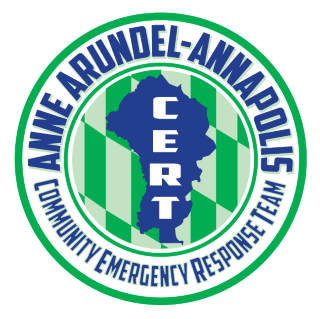
Both prescription painkillers and street drugs contribute to the opioid epidemic in Maryland. (Photo: Shutterstock.com/Leigh A. Williams)
On Oct. 16, Anne Arundel-Annapolis Community Emergency Response Team (AAACERT) hosted Mr. Paul Bowling, who provided training on the Maryland Overdose Response Program. Mr. Bowling is a Physician Assistant with over 40 years’ experience in Trauma, Critical Care, and Emergency Medicine and is also involved in Healthcare Emergency Management. Mr. Bowling currently serves as the president of AAACERT.
Mr. Bowling noted that Anne Arundel County has a particularly high rate of opioid overdose deaths. Anne Arundel’s total deaths by opioid overdose in 2018 exceeded those of some of the neighboring counties in Maryland.
An opioid is any drug that contains opium or its derivative. The opioid crisis began in the 1990s with the free flow of these substances due to liberal prescription practices by providers and promotion by drug companies. Opioids can be either prescription medications or illegal drugs, and are ingested by various means. The most common opioids are the prescription drugs oxycodone, hydrocodone, oxymorphone, morphine, and codeine; as well as the illegal drugs heroin and fentanyl.
Opioids vary in lethality per individual and circumstances. They are especially lethal for the elderly. Moreover, as opioids act on the brain, they become increasingly more toxic when mixed with another opioid, alcohol, benzodiazepines, and/or cocaine.
The effects of an opioid overdose can be reversed by naloxone (brand name Narcan). Naloxone reverses opioid overdose and restores breathing within a few minutes of being administered. It has no effects on a person who has not taken opioids (including the person giving it), so it is safe even if an overdose is mistakenly understood but has not occurred; moreover, the other side effects of naloxone for the person in overdose are minimal and rare. Naloxone can be given intranasally, intramuscularly, or intravenously. The drug onset is within 1-2 minutes, and it wears off in 30-90 minutes. Unfortunately, there are super-opioids on the street for which one dose of naloxone is not sufficient, so further dose(s) may be required.
Opioid overdose is characterized by several signs and symptoms. Like a person who is “high,” the victim’s pupils become very constricted (small). However, the victim may also display the following symptoms:
- Loud snoring or gargling noises
- A very limp body
- Unresponsiveness
- Pale or grey, clammy skin
- Bluish lips and fingertips
- A slow or erratic pulse
- Slow, shallow, or no breathing
- Unconsciousness
Due to the dangers of an opioid’s effects impacting the responder, it is imperative always to wear gloves when attempting to help the victim.
The following steps are recommended when responding to an opioid overdose victim.
- Rouse and stimulate the victim by touching, shaking his/her shoulders, or (carefully) performing a sternal rub.
- Call 911. *
- Administer naloxone.
- Perform further resuscitation. If the person is not breathing, or has shallow/short breaths, give rescue breaths (preferably with a barrier), or – if you are trained in CPR – chest compressions with rescue breaths.
- Care for the victim until professional responders arrive.
*Administer the naloxone first if the person is unconscious; a second dose may be necessary after calling 911.
When administering naloxone, allow 1-3 minutes for the medication to work. If breathing is not restored after 2-3 minutes, give another dose, and continue resuscitation as necessary. Be sure to follow the 911 dispatcher’s instructions once you have called.
It is also important to stay with the individual until medical help arrives. S/he may feel ill or agitated or need to vomit. If the person cannot sit up, make sure they are in the recovery position (right side, arm supporting head, bent knee to support body). Help the person to stay calm, and encourage him/her not to take more opioids. Remember that a person “coming to” is often annoyed, confused, and/or combative, so be sure to stay alert and protect yourself.
If you administer naloxone, it is important to call the Poison Control Center (1-800-222-1222) within two hours after the event, as this entity tracks the lethality of various street drugs, where they are trafficked and used, and other key information about opioids.
Finally, if you respond to an opioid overdose in progress, be assured that you cannot be held liable for a good faith attempt to help someone. Under the “Good Samaritan” measures in the Code of Maryland, Health General, Section 13-3110, “an individual who administers naloxone to an individual believed to be experiencing an overdose shall have immunity from liability under Sections 6-603 and 5-629 of the Courts and Judicial Proceedings Article.” Additionally, the Code of Maryland, Criminal Procedure Article, Section 1-120 states that, “a person who seeks, provides or assists with medical assistance for another person experiencing an alcohol- or drug-related medical emergency cannot be arrested, charged, or prosecuted for possession of a controlled dangerous substance; possession or use of drug paraphernalia; or providing alcohol to minors.” Moreover, calling 911 will not affect the parole or probation status of a person attempting to help.
Naloxone is available as a prescription from any licensed healthcare provider with prescribing authority or an authorized ordering, referring, or providing (ORP) entity that dispenses naloxone. Per statewide standing order, any person can obtain naloxone at a participating pharmacy. For a list of pharmacies that stock naloxone, visit the Maryland Department of Health Behavioral Administration’s information page.
AAACERT trains volunteers in disaster response skills and emergency preparedness. AAACERT volunteers assist others in our community following a disaster when professional responders are not immediately available to help. When activated under the Anne Arundel County Office of Emergency Management, or the City of Annapolis Office of Emergency Management, AAACERT supports emergency response agencies. For more information, visit www.aaacert.org.
By Laurie Goodell
